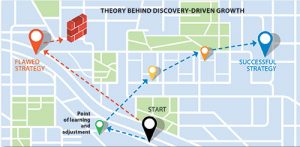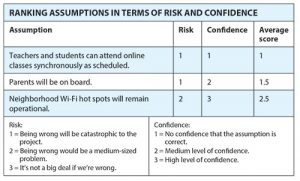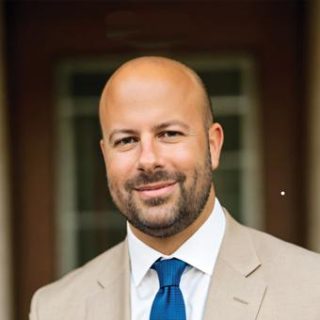FOCUS
A new blueprint for schools
By Thomas Arnett and Chelsea Waite
Categories: Change management, Implementation, LeadershipJune 2020
Vol. 41, No. 3
This spring, as schools grappled with sudden closures due to the COVID-19 pandemic, the phrase “building the plane as we fly it” was no exaggeration. Practically overnight, schools had to figure out an entirely different modality of instruction. And though the 2019-20 school year is behind us, it’s looking like new challenges are likely in the cards this fall, ranging from requirements to follow social distancing guidelines to rolling closures in response to localized COVID-19 outbreaks.
As researchers of K-12 innovation, our last decade studying digital learning has taught us that there’s no one-size-fits-all blueprint, even in normal circumstances. The varied and unpredictable effects of the global pandemic on schools and families further underscore this reality.
So rather than lay out the nuts and bolts of what all schools’ fall plans should look like, we offer research-backed strategies for responding to any new challenge brought about from dramatically shifting circumstances. These strategies can help school leaders have more predictable success as they respond to the pandemic or to other more common causes of school closure, such as floods, hurricanes, blizzards, and fires.
1.Consider how you frame your challenges.
Research shows that how we frame a situation — as a threat or as an opportunity — impacts how we respond (Roberto, 2016). When people encounter a significant threat, a response called “threat rigidity” sets in. They cease being flexible, double down on well-established routines, and rely on hierarchical command-and-control decision-making.
In a moment of crisis — such as the sudden school closures this spring — threat framing can be appropriate. It produces immediate and efficient responses when time is of the essence — such as when districts prioritize making sure students who depend on school for meals don’t go hungry. But constant threat framing also stifles the creativity needed for effectively responding to unknowns.
Compared to the crisis of this spring, school systems have a bit more time to prepare plans for the fall. But with that time, how do educators make the mindset shift from seeing school closures as a threat to seeing them as an opportunity? It starts by looking for the potential upsides of the current reality.
For example, the necessity of remote or blended learning can be an opportunity to improve the communication channels between schools and families, figure out mastery-based progression so that learning is the constant and not seat time, and discover new ways to incorporate high-quality online learning tools into instruction.
2.Organize your teams to maximize success.
During normal times, organizations often structure themselves according to well-defined functions — such as human resources, business services, information technology, and curriculum and instruction departments. When day-to-day work follows consistent patterns, dividing up that work across functional teams is highly efficient. Common norms and procedures minimize the need for coordination.
But when teams face circumstances that their roles, norms, and procedures were not designed to handle, the functional approach breaks down. Developing coronavirus-contingent learning plans requires a higher degree of creativity and collaboration among educators, staff, and families, which in turn necessitates a different type of team structure. When organizations need to develop completely different processes and approaches for tackling a new challenge or opportunity, they need to organize what we call heavyweight teams.
For example, when Toyota developed its Prius hybrid car, it couldn’t use functional teams because the hybrid necessitated a completely different product architecture. The company needed to develop new components — such as large batteries and electric motors — that needed to interface with other components in novel ways. The internal combustion engine needed to coordinate propulsion responsibility with an electric motor. Braking couldn’t just slow the car; it needed to generate electricity. This in turn completely altered the role the battery would play.

To solve this problem, Toyota pulled key people from each department and put them together in a completely new unit to serve as a heavyweight team. They brought their functional expertise — such as engineering, product design, safety, and marketing — to the team, but their role was not to represent the interests or needs of their respective departments. Instead, they needed to engage in intensive collaboration to come up with a new architecture for a new type of car.
A heavyweight team enables its members to transcend the boundaries of their functional departments and interact in different ways. To be effective, members of heavyweight teams often must step away from their prior responsibilities, and a manager with significant clout must lead the team.
Members bring their functional expertise with them as they join the heavyweight team, but their mindset must never be to represent the interests of their departments during the team’s deliberations. Rather, they think of themselves as having collective responsibility to figure out a better way to knit things together to meet the overall project’s goals.
Just as Toyota couldn’t invent the Prius by merely upgrading the components of a gas-powered vehicle, good coronavirus-contingent learning plans are not just a matter of putting conventional instruction online. As such, districts need to organize heavyweight teams if they hope to develop successful learning experiences amidst the constraints imposed by COVID-19.
Who should be involved in a district’s heavyweight team to figure out new approaches to instruction?
- District or outside experts on online learning;
- Conventional classroom teachers who will be leading virtual instruction for their students;
- IT staff members; and
- District communications leaders.
Lastly, but most importantly, districts need to include parents with various work arrangements — e.g. stay-at-home parents, work-from-home parents, and full-time working parents — who will need to support at-home learning.
When students learn at home, their home circumstances dramatically affect their educational success. Given that families’ circumstances are different, one-size-fits-all solutions aren’t going to work for all families. To account for these varied home circumstances, districts need to ensure that families are part of their heavyweight teams.
3.Discover your way to success.
As schools develop coronavirus-contingent learning plans for the fall, one of the major traps they can fall into is defaulting to conventional approaches to planning. Conventional planning operates on the premise that it’s possible to extrapolate future results from a well-understood and predictable platform of past experience. In this scenario, deviations from the plan are a bad thing because they risk leading away from circumstances that leaders understand well.
Our school systems are accustomed to conventional planning: Teachers often confirm a curriculum scope and sequence for the entire semester or year, and many schools submit annual accountability plans to the district or county.
But in unknown, uncertain, and evolving circumstances, conventional approaches to planning just won’t work because knowledge is scarce and uncertainty is high. Instead, educators must make do with assumptions about the possible futures on which their current decisions are based.
Fortunately, that doesn’t have to mean defaulting to the Wild West. A different approach to planning, called discovery-driven planning, is in wide use by start-ups and new ventures as a way to be systematic about planning when little is known and much is assumed. The approach imposes disciplines different from, but no less precise than, the disciplines used in conventional planning.
Here’s how heavyweight teams can use discovery-driven planning as they develop coronavirus-contingent learning plans:
Align on a SMART goal.
Faced with sudden closures, any educator’s gut reaction is likely to be: “Figure out how to keep kids learning.” But to iterate on plans that optimize for a North Star, it’s important for the goal to be SMART: specific, measurable, attainable, results-based, and time-bound.
In normal circumstances, a SMART goal should target an outcome like achievement or student engagement. During this unprecedented time, a teacher’s goal might be: “Measure an average of 4 out of 5 stars on weekly family satisfaction surveys.” A district might set out to “ensure 100% of our students are able to participate in coronavirus-contingent learning.”
As educators consider possible SMART goals, an opportunity framing (as noted in strategy 1 above) can be key to helping heavyweight teams think outside the box. Rather than setting goals just to address the threat of possible closure, consider how goals and plans can also help advance educational opportunities during normal times.
For example, a district might set a goal to create an online learning department that can serve an important purpose even after the pandemic, such as to serve medically homebound students, homeschool students, or students who want to take elective courses that are hard to offer at brick-and-mortar campuses.
Alternatively, consider goals for building teachers’ confidence with basic blended-learning practices — perhaps using the online professional development resources from the Modern Classroom Project (learn.modernclassrooms.org), the iLearn Collaborative (www.ilearncollaborative.org/pd-catalog), or the Relay Graduate School of Education (www.canvas.net/browse/relay) — all of which will also give teachers a huge leg up if and when they need to take their classes fully virtual.

Make an exhaustive list of the assumptions that must prove true for the goal to be realized.
At their outset, coronavirus-contingent learning programs can carry many assumptions, some of which may not prove viable. Assumptions may be “students have access to devices and the internet,” “parents will be on board,” “teachers know how to facilitate online instruction,” and so forth. The heavyweight planning team should brainstorm an exhaustive list of all the assumptions behind its initial plan. Many discovery-driven planning teams document as many as 100 assumptions to start.
Rank each assumption in terms of both risk and confidence.
When all the conceivable assumptions are identified, rate each assumption according to its risk level and its certainty, then average the scores for each assumption. Next, sort the assumptions according to their average scores, with the riskiest and least certain assumptions at the top of the list. An example could look like this: See table above.
Develop plans to test the highest-priority assumptions first.
Assumptions with scores closest to 1 should be tested first, and immediately. Tests initially should be simple and cheap, such as running a quick poll or calling a colleague at a virtual school who has experience with the issue to see if his or her experience supports your assumption. As time goes on, tests should increasingly be run in the field by monitoring the results of actual implementation. For example, a district might pilot an online learning summer STEAM camp as a way to test online learning options.
Determine if the assumptions are holding true at predetermined checkpoints, and adjust if they don’t.
If assumptions hold true, keep moving forward with that aspect of the plan. If they don’t, make changes or reimagine your approach. As you make adjustments and iterate, you may find that your methods for achieving your SMART goal look very different from what you originally imagined — which is evidence of converting assumptions into knowledge.
As plans change, remember that you can introduce new assumptions, so don’t be afraid to add to or adjust your assumptions list. As opposed to a static plan that can be filed away once it’s approved, a discovery-driven plan is a living document. See diagram on p. 39.
As the year continues to shape up under evolving circumstances, the thought of trying to ensure quality education under the constraints imposed by COVID-19 can be overwhelming. In circumstances like these, instead of worrying about plans being imperfect and things not working out, define success as getting from assumptions to knowledge as quickly as possible. And to avoid the gridlock of endless debate over the hypothetical benefits of different approaches, prioritize the fastest and cheapest ways to convert ideas to real evidence.
With opportunity framing, heavyweight teams, and a discovery-driven approach to planning, education leaders can greatly improve their odds of success when responding to possible school closures. At times like these, when conventional practices fall short and known solutions are scarce, the best answers will emerge from those who leverage sound strategies to guide their work.
References
Roberto, M.A. (2016, December 20). Decision making: Framing risk and opportunity. The Great Courses Daily. www.thegreatcoursesdaily.com/framing-risk-opportunity
Categories: Change management, Implementation, Leadership
Recent Issues
LEARNING DESIGNS
February 2025
How we learn influences what we learn. This issue shares essential...
BUILDING BRIDGES
December 2024
Students benefit when educators bridge the continuum of professional...
CURRICULUM-BASED PROFESSIONAL LEARNING
October 2024
High-quality curriculum requires skilled educators to put it into...
LEARNING TO PIVOT
August 2024
Sometimes new information and situations call for major change. This issue...













